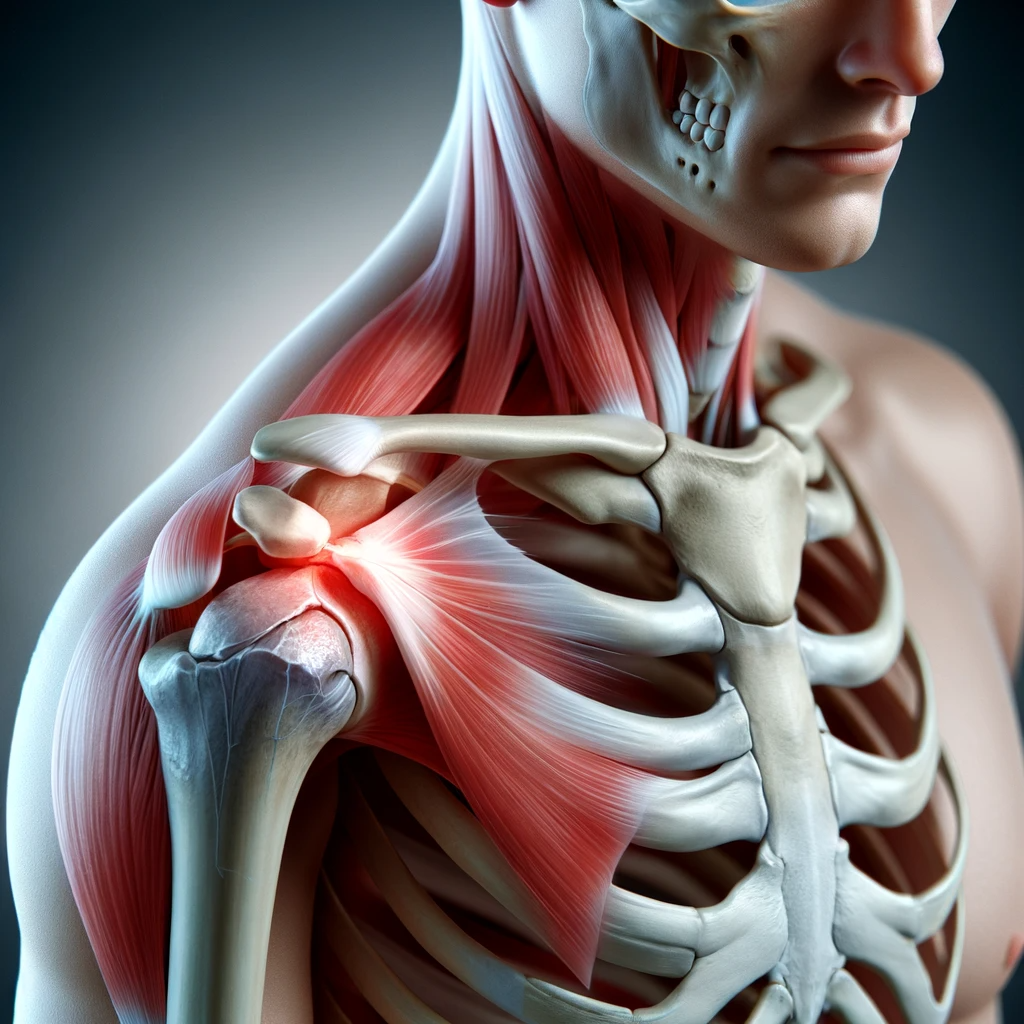
The Clavicle and Shoulder Pain.
Let’s embark on a journey of discovery into the intricate world of the clavicle and shoulder pain – the often overlooked key player in shoulder pain and dysfunction. In this exploration, we will delve deep into the anatomy and biomechanics of the clavicle, uncovering its crucial role in maintaining shoulder stability and harmony.
A Pivotal piece in shoulder pain.
The clavicle, also known as the collarbone, is a seemingly unassuming bone, yet it plays a pivotal role in the intricate dance of the shoulder girdle. Its S-shaped curve provides both flexibility and structural support, linking the sternum (breastbone) to the scapula (shoulder blade). This elegant connection allows for a wide range of shoulder motion while maintaining stability.
Anatomy and Function
To truly understand the clavicle’s significance, let’s dissect its anatomy and biomechanics:
1. Structural Support: The clavicle serves as a vital strut, supporting the upper limb and anchoring it to the axial skeleton. Any disruption in its function can have a profound impact on shoulder stability.
2. Muscular Attachments: Various muscles, including the deltoid, pectoralis major, and trapezius, attach to the clavicle. These attachments influence shoulder movement and function. Dysfunctions within these muscles can manifest as shoulder pain.
3. Range of Motion: While the clavicle itself does not possess significant motion, it acts as a conduit for the scapula’s gliding movement. A well-functioning clavicle ensures smooth scapular motion, preventing restrictions that can lead to discomfort.
Clavicle and Shoulder Pain
Now that we’ve explored the clavicle’s anatomy and role in shoulder function, let’s examine its connection to shoulder pain:
1. Stability Disruption: Any trauma, injury, or misalignment of the clavicle can disrupt the shoulder’s stability. This instability may lead to pain and discomfort, especially during movements that stress the shoulder.
2. Muscular Influence: Dysfunctions in the muscles attached to the clavicle can result in imbalances, leading to shoulder pain. For example, overuse or strain of the deltoid or pectoralis major can manifest as pain originating from the clavicular region.
3. Scapular Harmony: The clavicle’s role in facilitating scapular movement is crucial. Restrictions in clavicular function can affect the scapula’s rhythm, potentially leading to discomfort.
Clavicle Pain Treatment.
When treating the clavicle we focus on osteo-articular pumping of both the sternal and acromial ends. Additionaly, we utilize myo-fascial stretching of all the muscles that attach to the clavicle along with segmental strengthening as needed for those same muscles. Lastly, we do the ELDOA for the clavicles and consider any other muscular imbalances that may be affecting the shoulder further down the chain.
Conclusion
In our exploration of the clavicle’s role in shoulder pain and dysfunction, we have unraveled its intricate anatomy and biomechanics. This seemingly humble bone holds the key to shoulder stability and harmony. Understanding the clavicle’s significance empowers us to address shoulder pain at its root, providing relief and restoration.
At Pierce Family Wellness, we are dedicated to unlocking the secrets of pain relief, one bone, one muscle, one movement at a time. Join us in the journey to a pain-free, harmonious shoulder, where the clavicle’s role is celebrated and optimized.
Shoulder pain is just one piece of the puzzle. If you wish to explore further or have specific questions, we are here to guide you through the complexities of the human body, where every bone tells a story, and every movement matters. See how we have helped others with their shoulder pain.
For another detailed look at how to rehabilitate your shoulder, check out this blog by Paul Chek.


